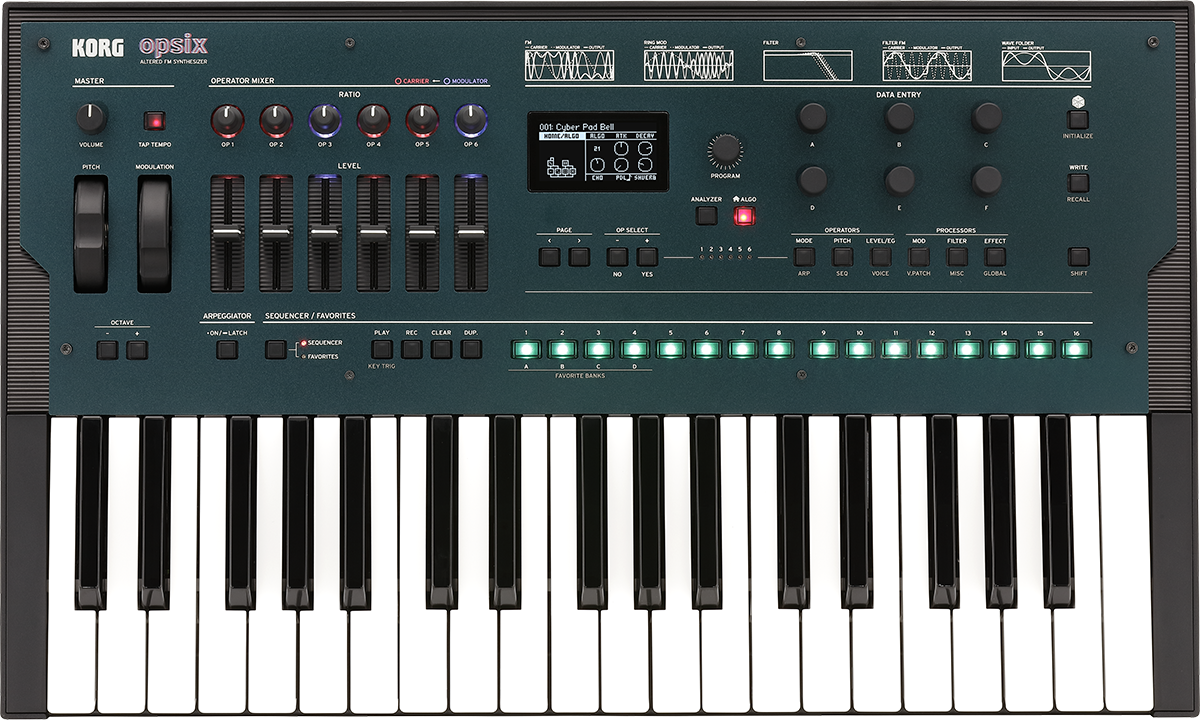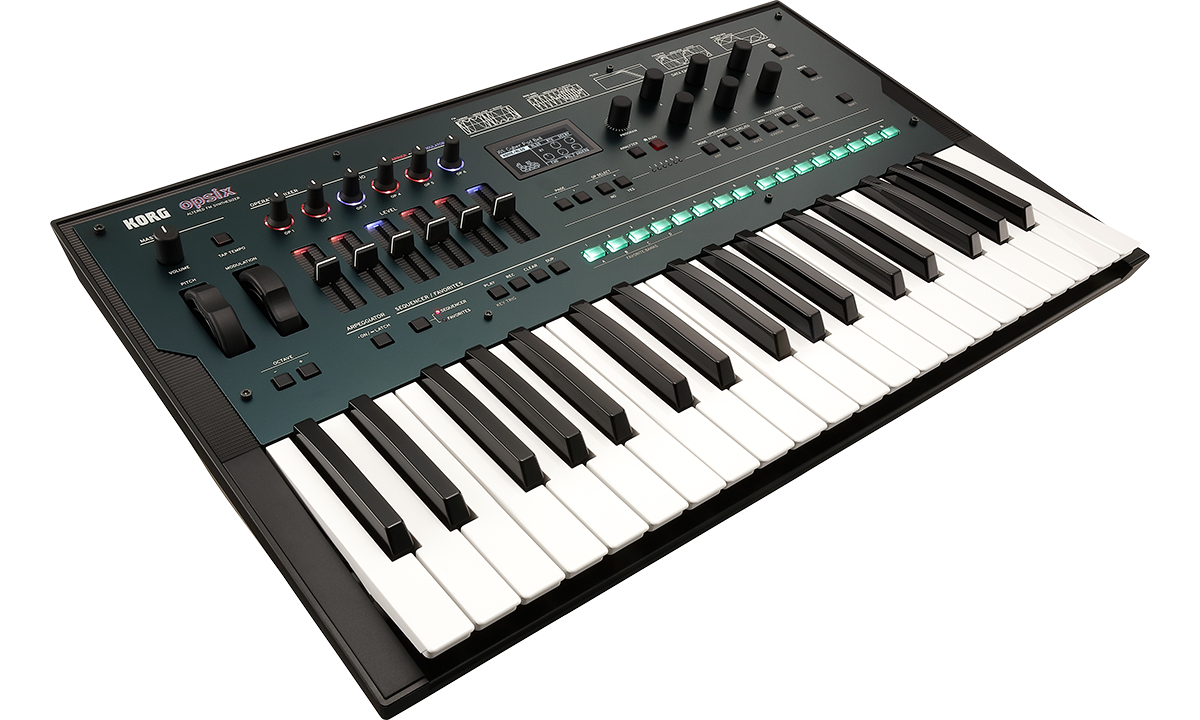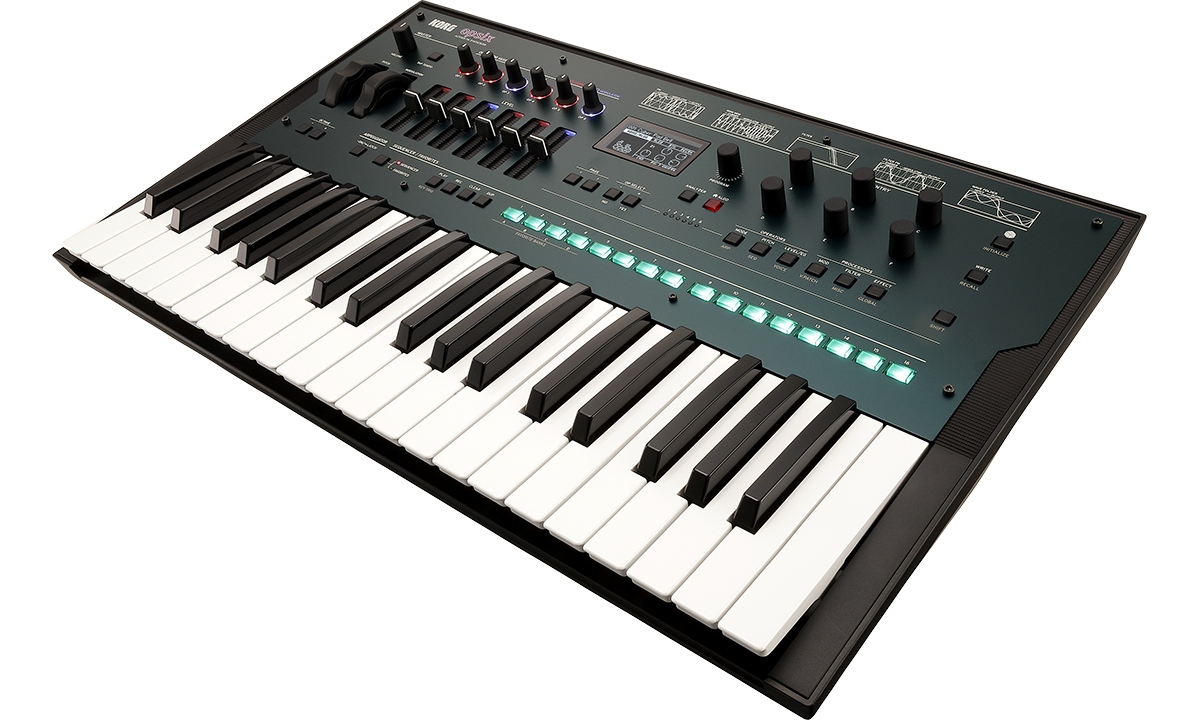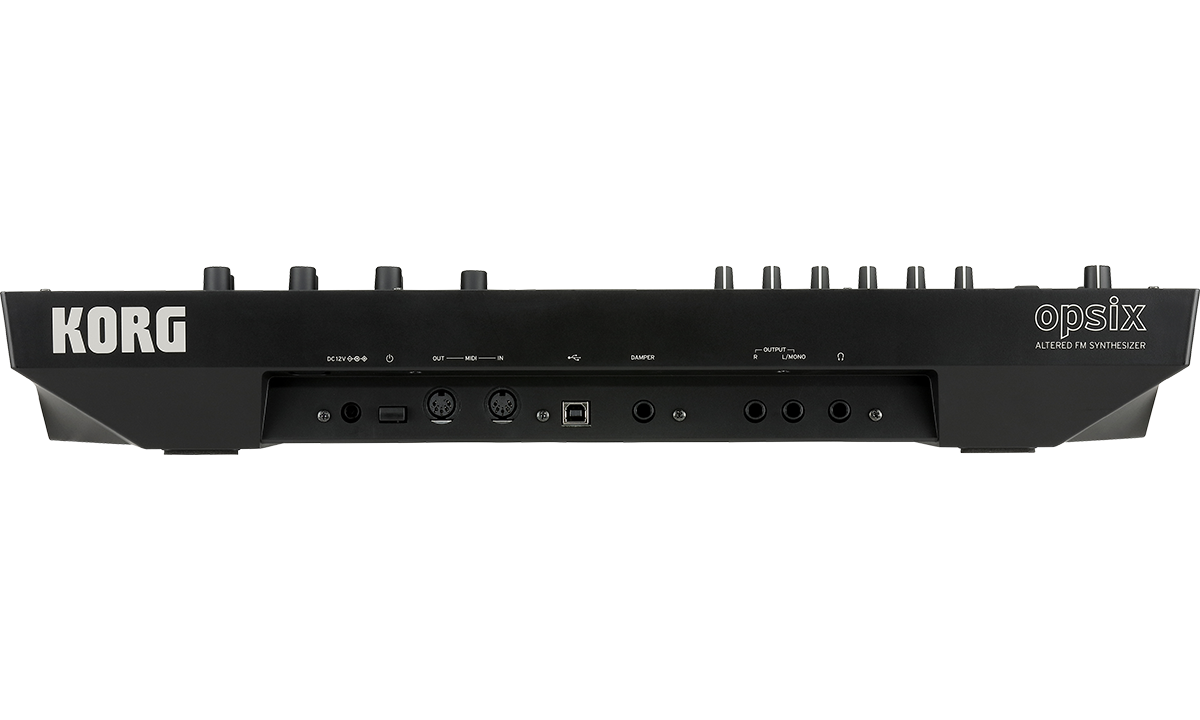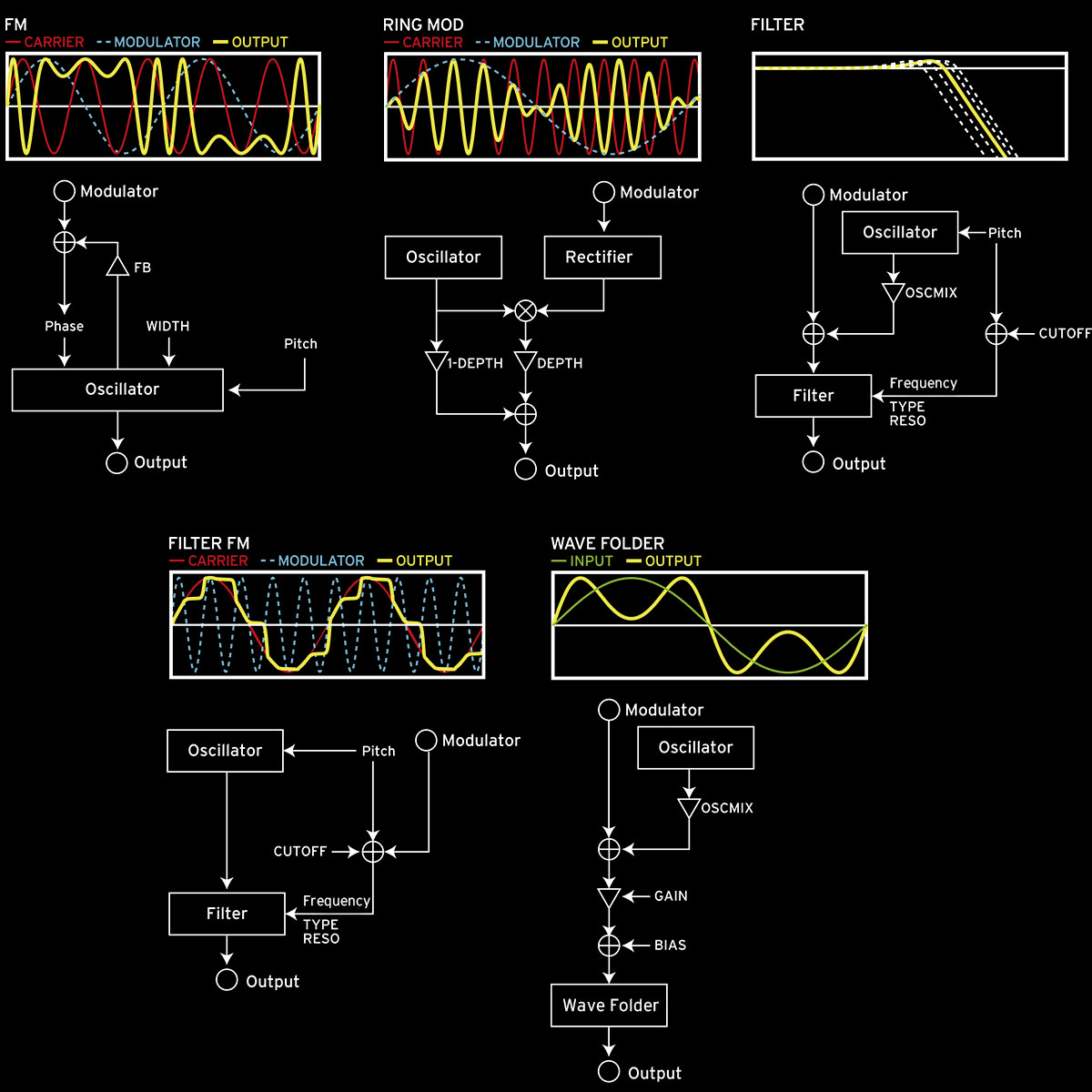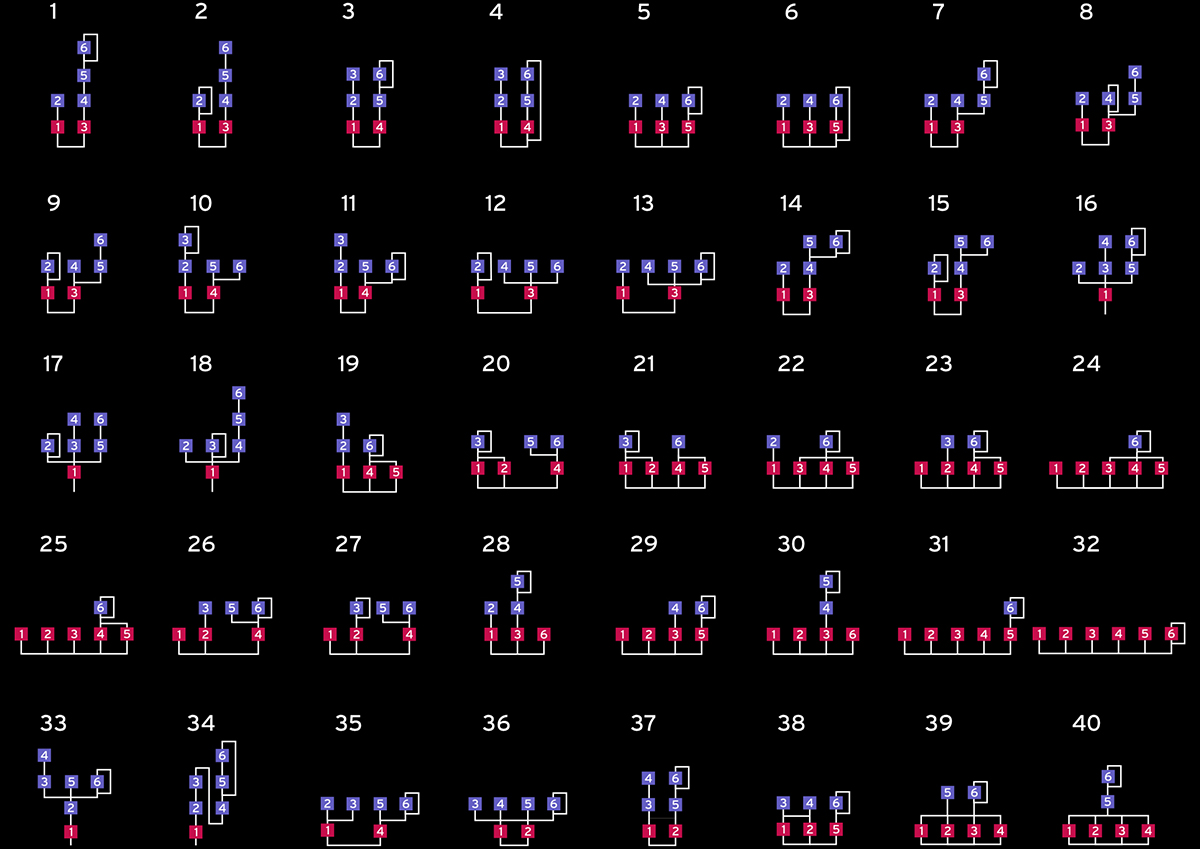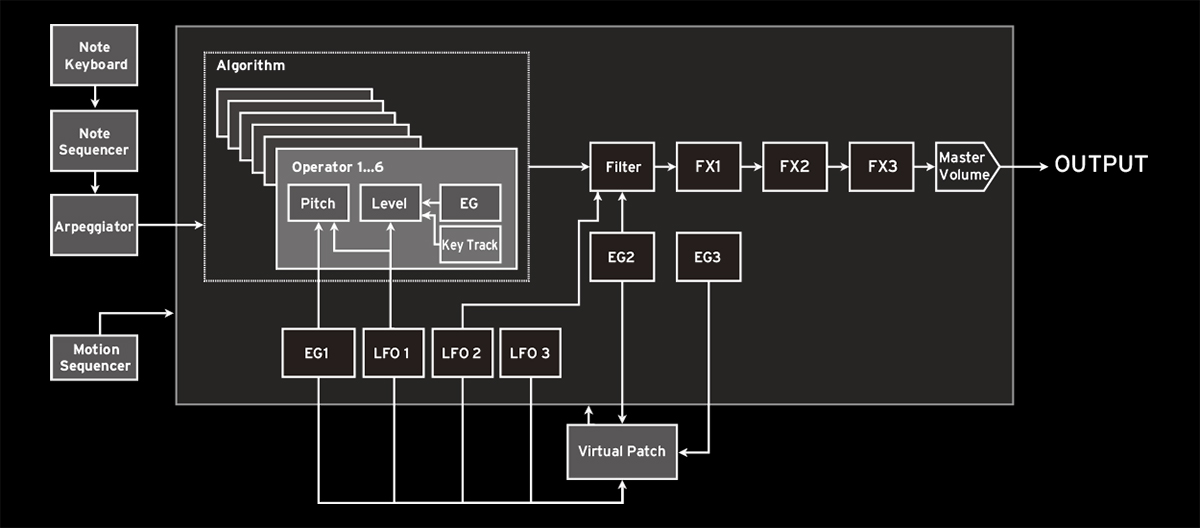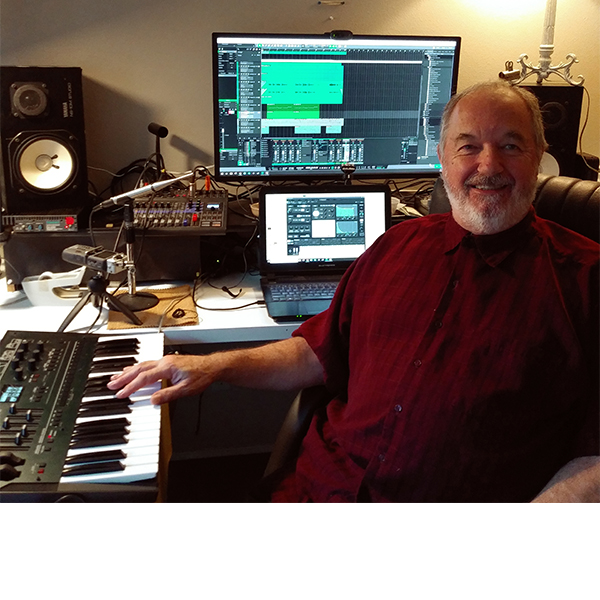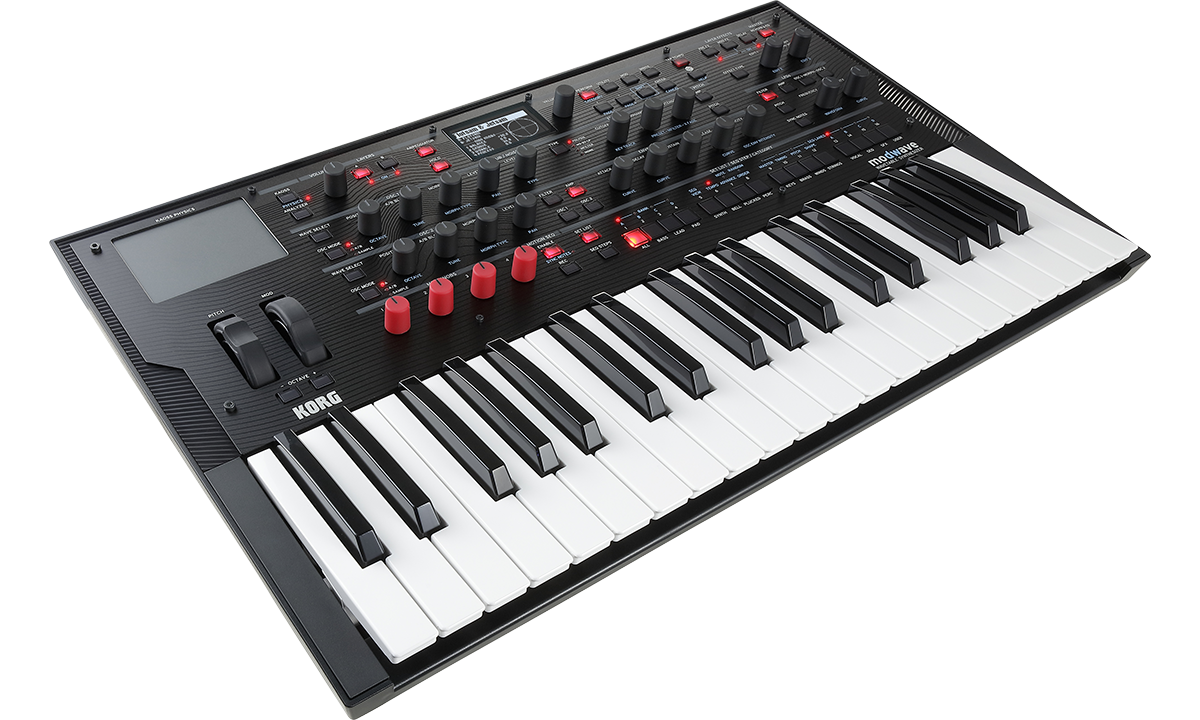Rethink everything you know about FM synthesis.
The opsix represents a new and expansive reimagination of classic digital synthesis. Much like Korg did when bringing wave sequencing back in a more powerful, more musical, and more immediately accessible way with wavestate, so was the approach to FM sound generation of the opsix, resulting in another incredibly flexible and unique synth.
The opsix is an “altered” six-operator FM synthesizer. With its astoundingly accessible operator mixer and flexible sound engine that goes well beyond traditional FM, this instrument widens the potential of digital synthesizers to their utmost.
The opsix is an instrument for players of all generations—modern in every way, getting back to the basics to offer you a glimpse of the future. Whether you are new to synths, looking for a completely unique addition to your sound palate, or an original FM purist, opsix will deliver on all expectations and more.





